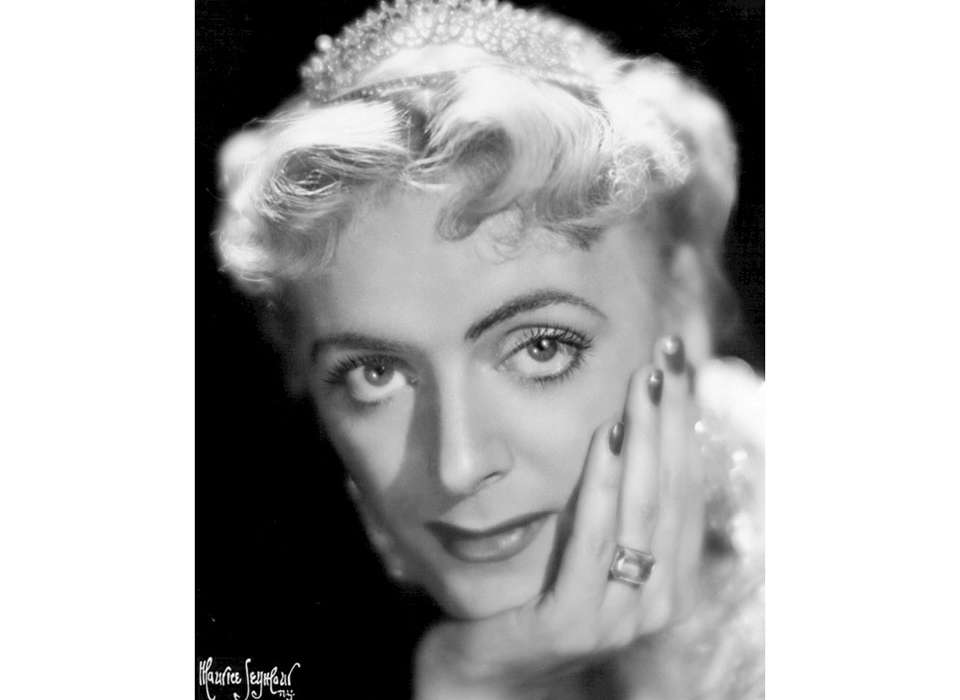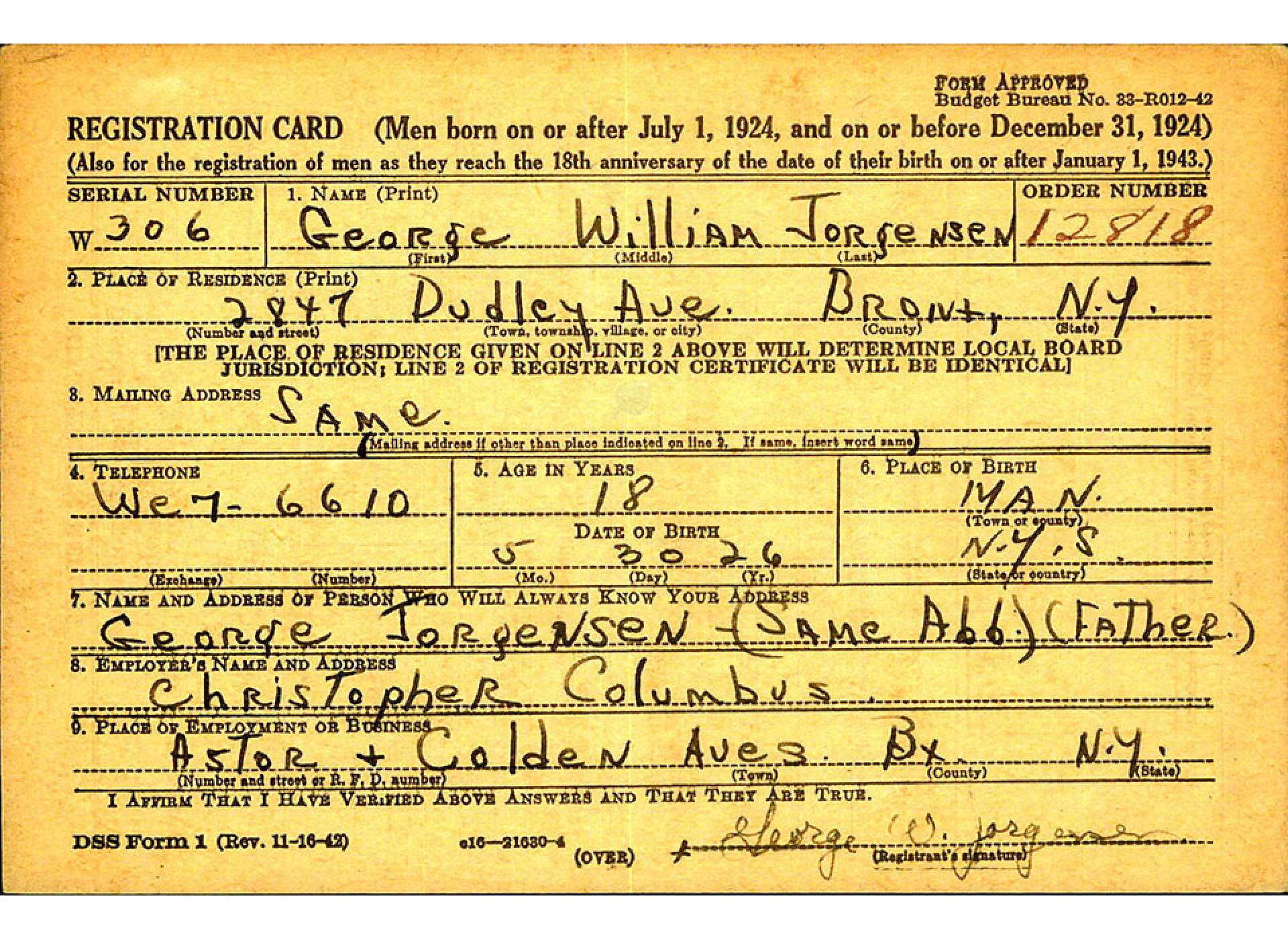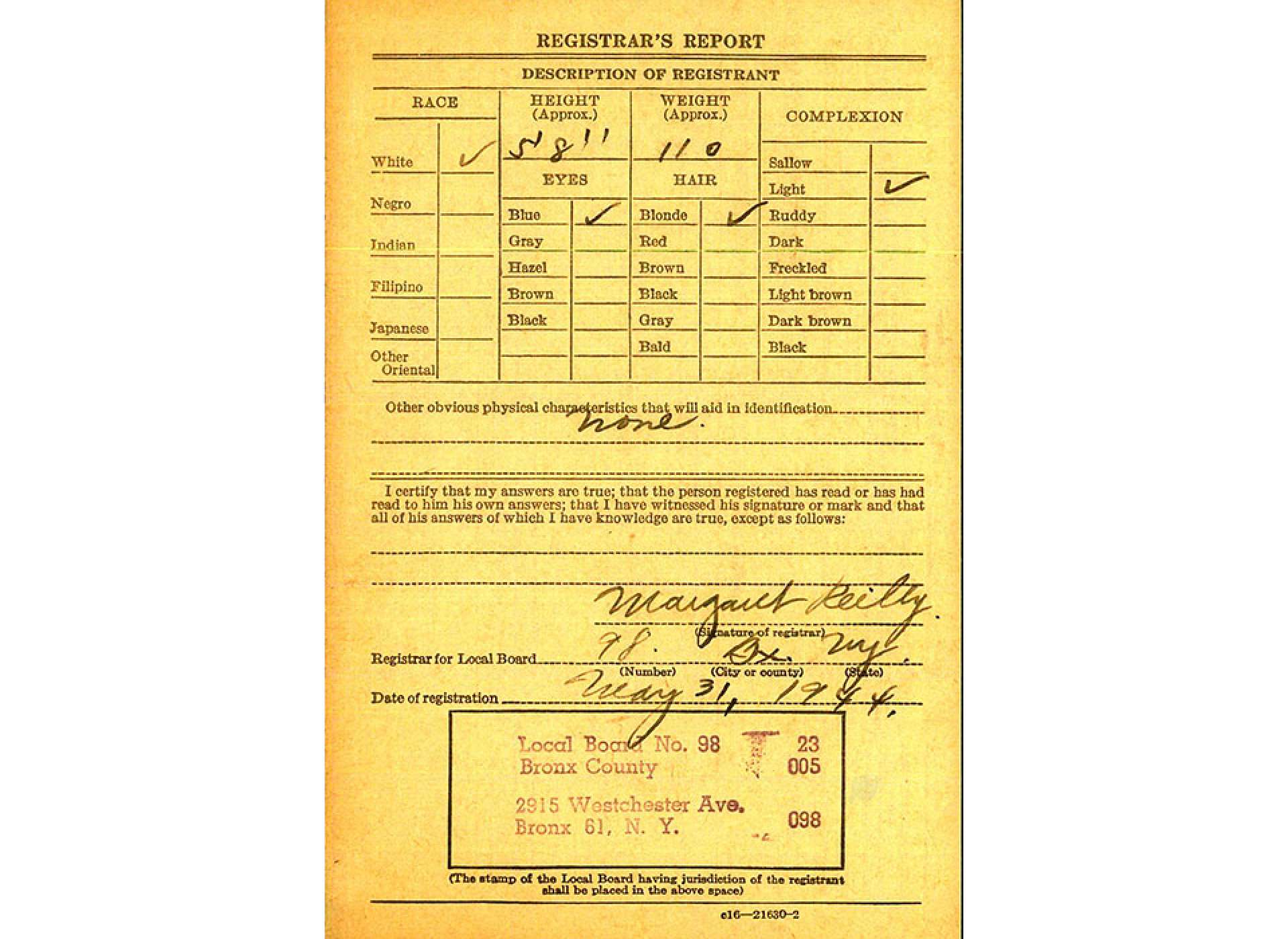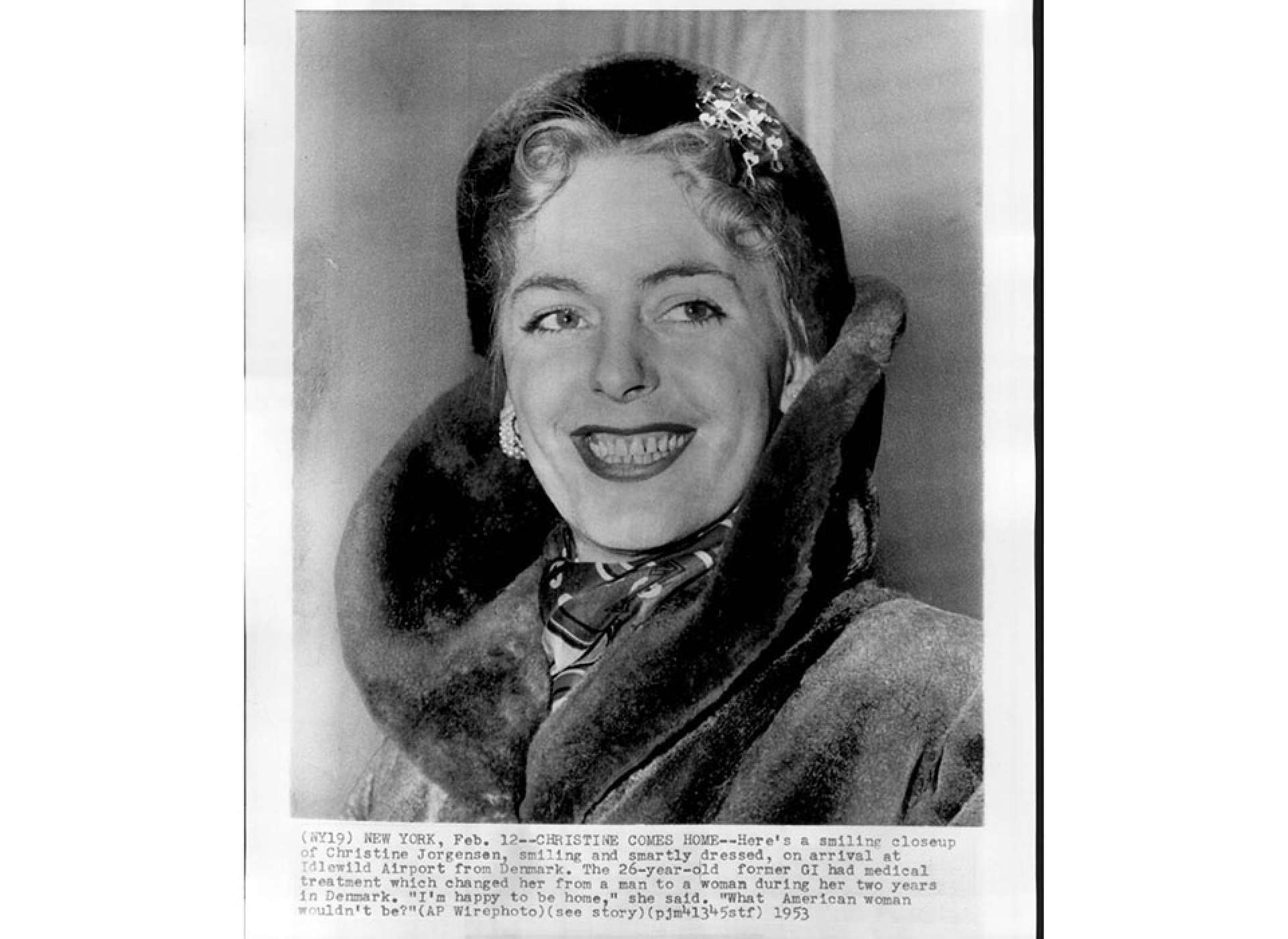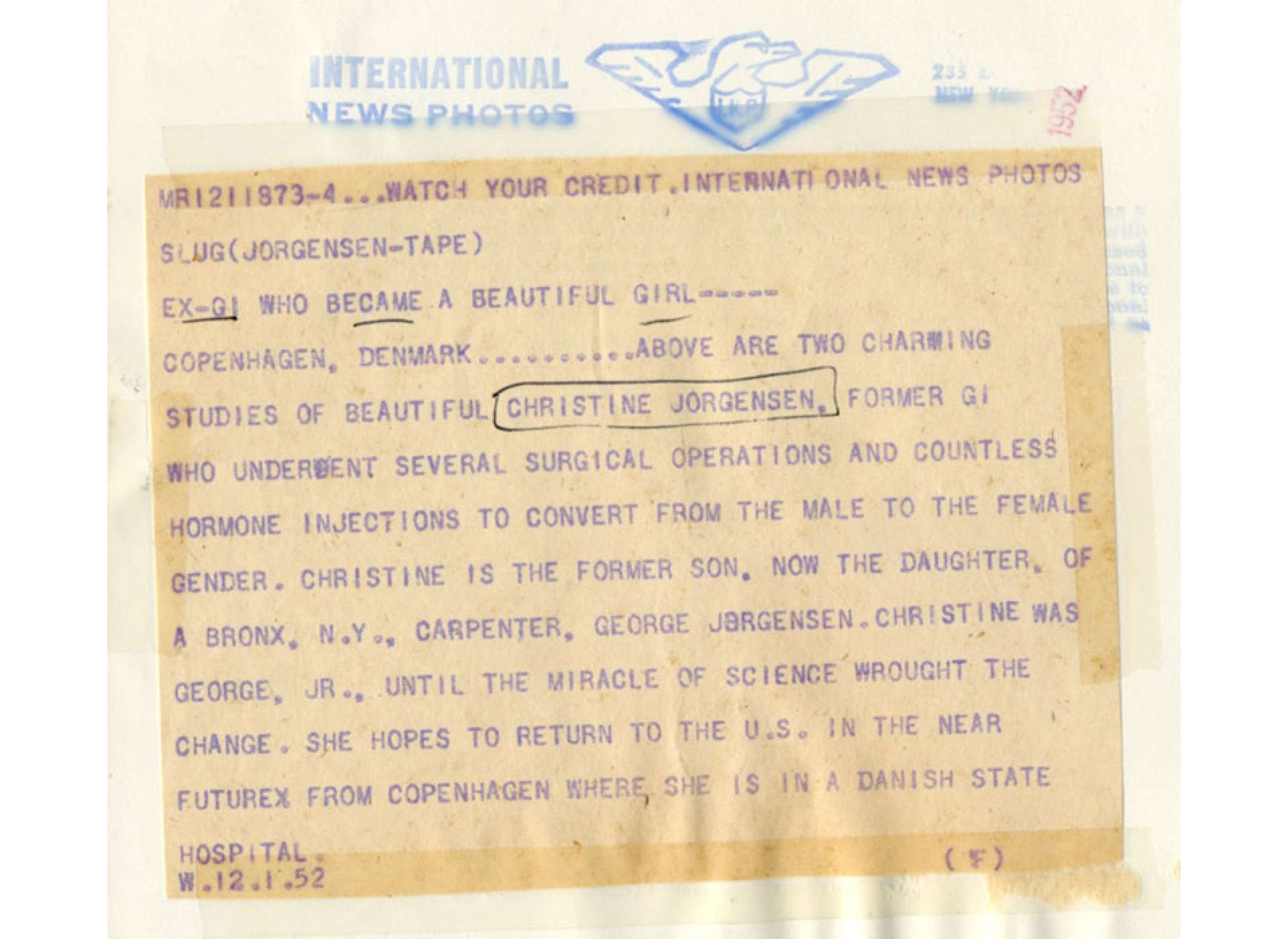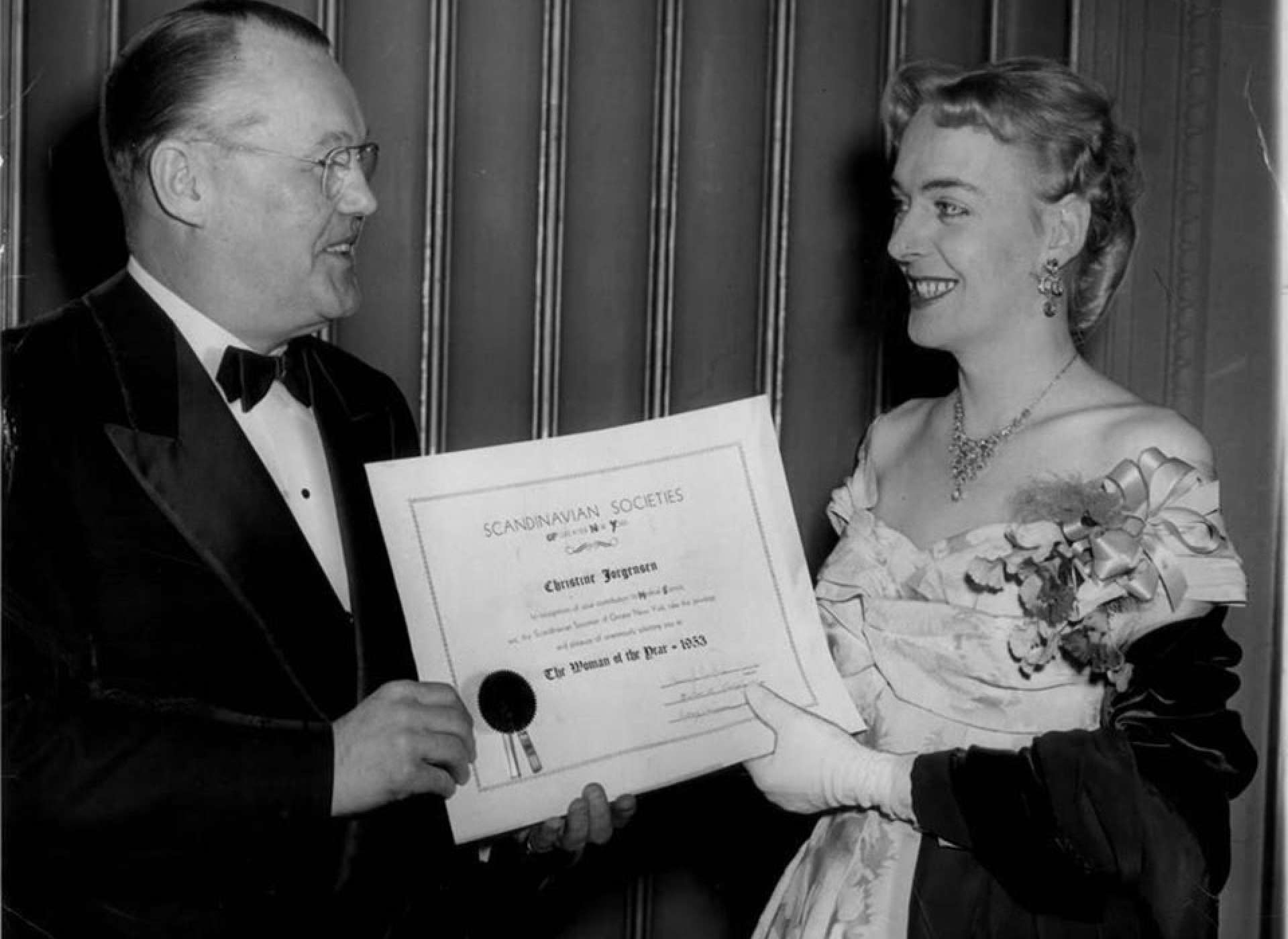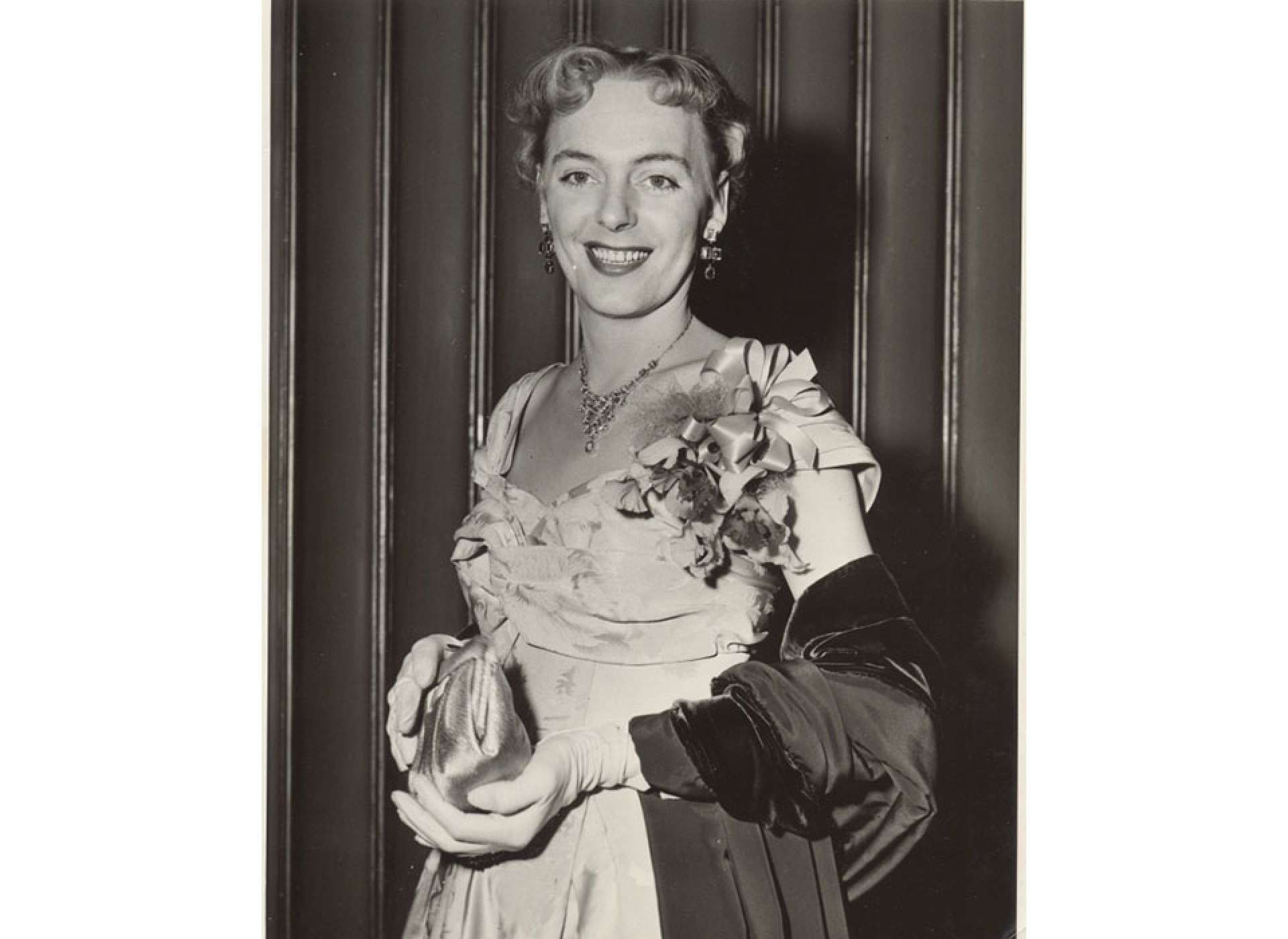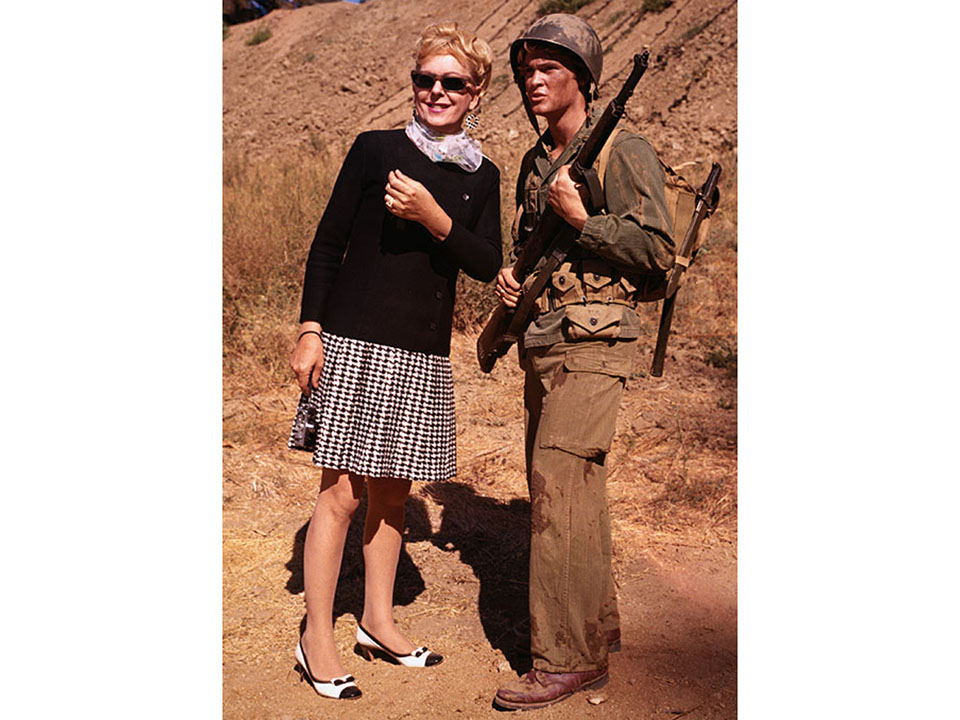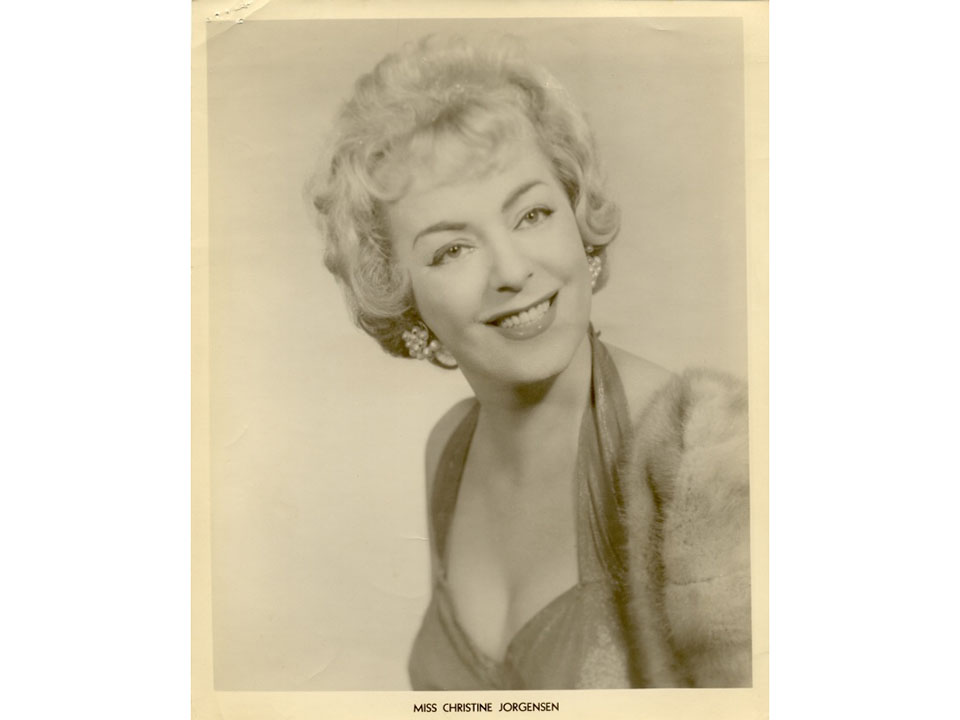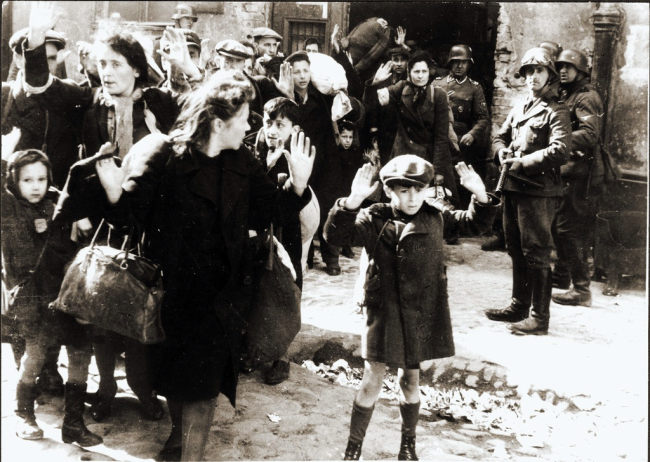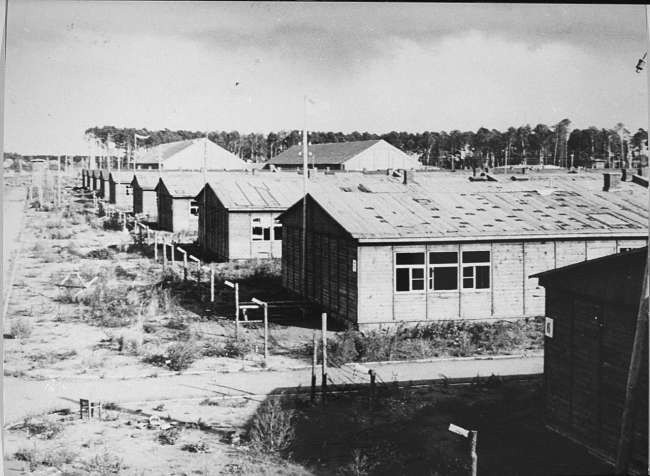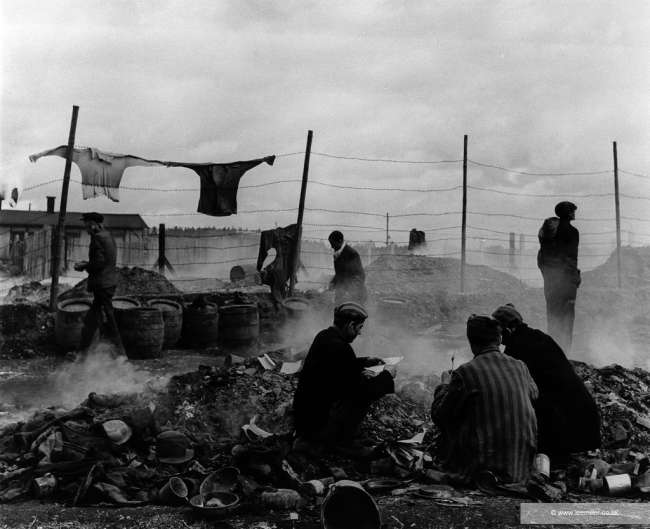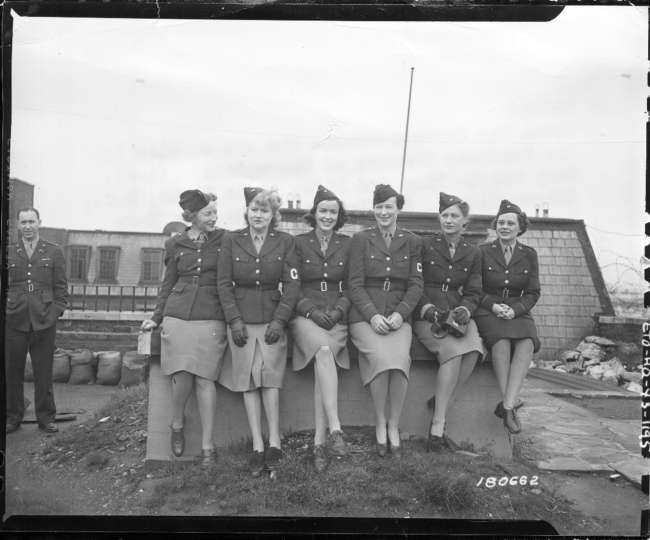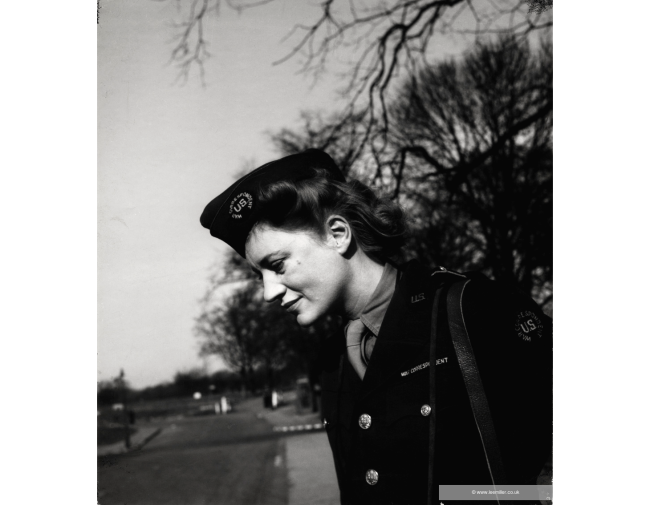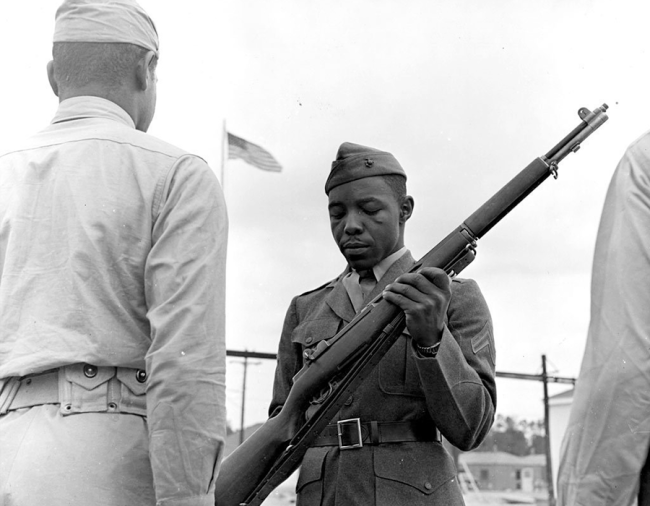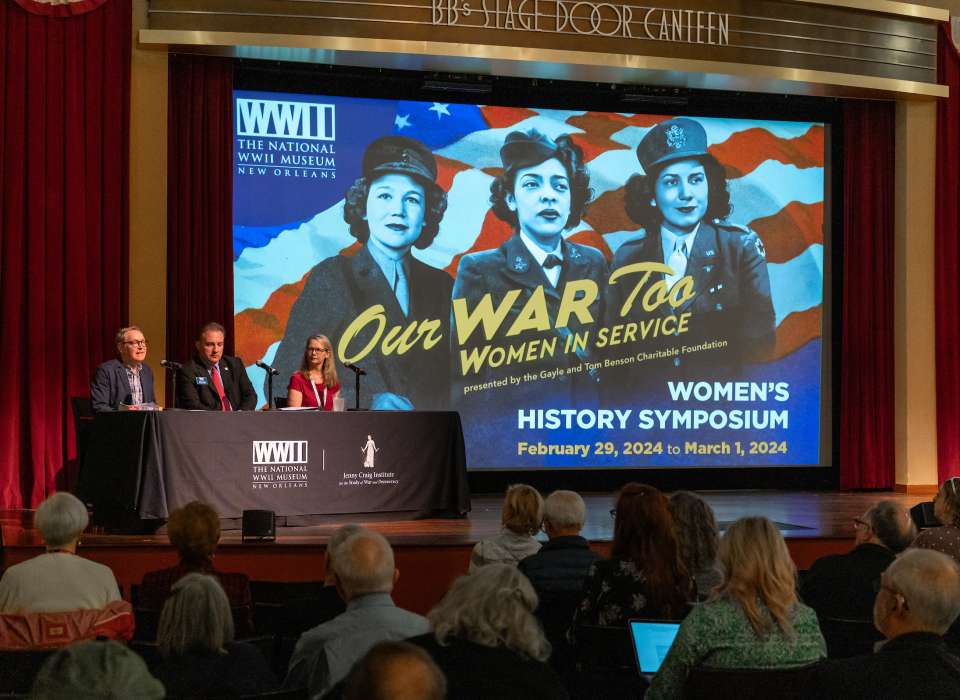Top Image: Photo of Christine Jorgensen taken by Maurice Seymour in January 1954. Courtesy of Wikicommons.
One day while flipping through my dad's collection of vintage Life magazines, the headline “Ex-GI Becomes Blonde Beauty” caught my eye. What followed was the fascinating story of Christine Jorgensen. Jorgensen, who served in the US Army during and after World War II, became the first American transgender woman to attain fame for having sex reassignment surgery. The article celebrated her heroism during the war and embraced her feminine qualities, such as her hair and fashionable clothes. Interestingly, the article was published in 1952, a time when gay and lesbian WWII veterans were often stripped of their medals and fired from their jobs because of who they loved. But why was Jorgensen celebrated when other members of the LGBTQ (Lesbian, Gay, Bisexual, Transgender, and Queer) community were not?
Christine was born George William Jorgensen, Jr. on May 30, 1926 in the Bronx, New York City. As a child, Jorgensen felt very different from other little boys and remained secluded and shy. The boys poked fun at Jorgensen’s feminine tendencies and even her own sister would chime in now and then. She seemed to gravitate toward dolls and dreamed of having the elegant feminine qualities that a woman possessed. In one of Jorgensen’s early memories, she recalled questioning her identity to her mother: “‘Mom,' I asked, 'why didn’t God make us alike? My mother gently explained that the world needed both men and women and there was no way of knowing before a baby was born whether it would be a boy or girl.” Jorgensen’s family was very close, and her grandmother became Jorgensen’s biggest champion and supported Jorgensen expressing her identity. In high school, Jorgensen developed an attraction to her male friends, but she knew at the time, she was not gay. Instead, she realized that she was a woman trapped inside a man’s body.
After Jorgensen graduated high school during World War II, she tried to enlist in the Army, but she was denied because of her dainty size and weight. However, a couple of months later she was drafted into the Army and stationed at Fort Dix, New Jersey. During Jorgensen’s service, she kept mostly to herself and concealed her attraction to men. At the time, many service members feared being exposed or labeled as a homosexual, which could get a soldier prison time, a dishonorable discharge, or court-martialed. Jorgensen explained that, “I wanted to be accepted by the army for two reasons. Foremost was my great desire to belong, to be needed, and to join the stream of activities around me. Second, I wanted my parents to be proud of me.” She labored as a clerical worker, managing thousands of discharged soldiers after VE Day for 14 months until she herself was honorably discharged in December 1946.
-

Jorgensen’s Army registration card courtesy of Fold3.com.
-

Jorgensen’s Army registration card courtesy of Fold3.com.
After Jorgensen’s military service, she went to photography school in New Haven, Connecticut, and dental assistant school in New York City. Jorgensen was still unhappy with her life, however, and she began to look for answers in books, hoping she might find answers. One book called The Male Hormone piqued her interest and helped explain her problems, which led her to start taking estrogen. Then, she consulted with doctors about surgeons in Europe who had already performed sex reassignment surgery. Jorgensen was determined to be transformed into a woman, and in 1950, she traveled to Denmark to pursue her dreams.
When Jorgensen arrived in Denmark, she met endocrinologist Dr. Christian Hamburger, who agreed to do the experimental procedure for free. He was the first person to diagnose Jorgensen as transsexual and not homosexual. For the next two years, Jorgensen underwent hormone treatment, psychiatric evaluations, and finally surgery to remove her male genitalia. Unfortunately, she did not receive a surgically created vagina until years later when she was back in the United States. Before she returned to the United States, she had one last alteration to make in order to complete her transformation. She changed her name to Christine in honor of Dr. Hamburger’s work of making her dreams come true.
-

Jorgensen's arrival in the United States from Denmark. Image courtesy of TransasCity.org.
-

Telegram of Jorgensen's story. Image courtesy of TransasCity.org.
Upon Jorgensen’s arrival home, her story reached the newspapers and on December 1, 1952, she made the front page of the New York Daily News under the headline “Ex-GI Becomes Blonde Beauty: Operations Transform Bronx Youth.” In the following months, hundreds of newspapers featured her story, and she became an overnight sensation. The press and public’s reaction came as a great shock to Jorgensen: “I was surprised that everyone seemed very interested in my life… time went on and I realized this was an important step in the eyes of the world.”
-

Soon after she arrived, she was given a very prestigious award by the Scandinavian Societies of Greater New York, where she was made “Woman of the Year.” Image courtesy of TransasCity.org.
-

Soon after she arrived, she was given a very prestigious award by the Scandinavian Societies of Greater New York, where she was made “Woman of the Year.” Image courtesy of TransasCity.org.
Headlines emphasized her GI background and embraced her as an American beauty by describing her long legs, blonde hair, and high fashion clothes. Jorgensen’s patriotism as a WWII veteran and beautiful feminine attributes embodied American values and structure, which captivated the public and press. Her transition from a man to a woman also showed the world the advancement of technology and medical science. These qualities help explain why the press and American society celebrated Jorgenson’s story. Although not everyone was so kind.
Like most members of the LGBTQ community, Jorgensen experienced her share of hate and discrimination. Six months after the media released her story, reporters reached out to surgeons who transformed Jorgensen from one gender to the other on the steps of the surgery. The surgeons released information that although Jorgensen removed her male genitalia, she did not have a vagina. Before this incident, the press assumed Jorgensen had a vagina. Her former supporters felt betrayed at the discovery and claimed she could not be a woman without ovaries and women’s other reproductive organs. Previously, Jorgensen avoided questions relating to her anatomy by focusing on her war background and physical appearance. The media soon shunned her and, according to author David Serlin, “they exposed her as an ‘altered male’-and, later, a ‘morbid’ transvestite… Jorgensen was seen as nothing more than a limp wristed queer who indulged in activities culturally identified as female and therefore effeminate.” She felt incomplete without a vagina until the day finally came, in May 1954, when Jorgensen underwent a vaginoplasty performed by Dr. Joseph Angelo and Dr. Harry Benjamin.
Jorgensen went on to be an entertainer and performed in many nightclubs. She wanted to be a Hollywood star but never made it big. She had several romantic relationships and was engaged twice, but unfortunately, she was denied a marriage license because her birth certificate identified her as a male. To compound her struggles, one of Jorgensen’s fiancés also lost his job when their engagement became known. However, she remained confident and optimistic about life, and in 1967, Jorgensen wrote an autobiography titled Christine Jorgensen: A Personal Autobiography. Throughout her life, she received thousands of letters, both positive and negative, but the majority of the letters were from others with the same problems asking for help and guidance. She only wished that she could help all the individuals who reached out to her, but in a way she did by staying true to her identity and being a role model for others. Jorgensen went on to use her story to lecture at colleges across the United States on gender identity. Her life captivated and influenced so many that, in 1970, Hollywood created a film based on Jorgensen’s life called, The Christine Jorgensen Story.
Christine on the set during the filming of The Christine Jorgensen Story, meeting with actor John Hansen (who is portraying the “male” Jorgensen.) Image courtesy of TransasCity.org.
On May 3, 1989, Jorgensen died from bladder and lung cancer. Although gone, her incredible story still resonates and offers hope for transgender veterans as they pursue self-fulfillment. Jorgensen concluded that “The answer to the problem must not lie in sleeping pills and suicides that look like accidents, or in jail sentences, but rather in life and freedom to live it.”
Suggested Further Readings:
Christine Jorgensen, Christine Jorgensen: A Personal Autobiography (New York: A Bantam Book/ published by arrangement with Paul S. Eriksson, Inc., 1967).
David Serlin, Replaceable You: Engineering the Body in Postwar America (Chicago: University of Chicago Press, 2004).
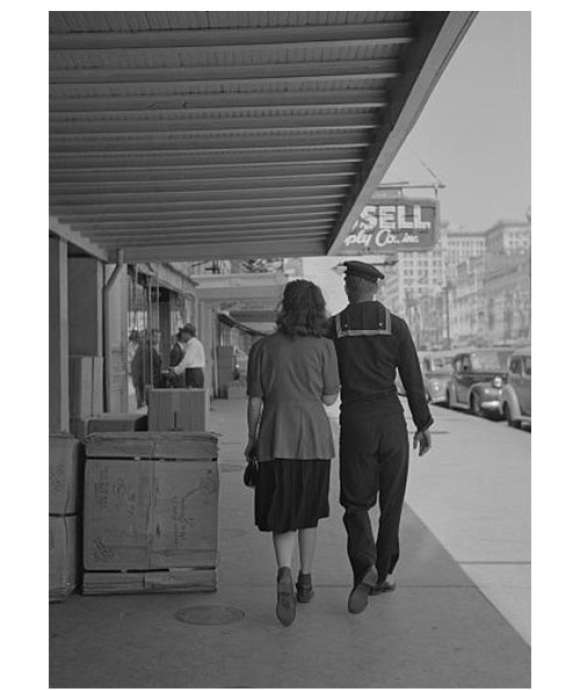
Louisiana Spotlight: Booby Trap—The War on Prostitution in New Orleans
When the United States entered World War II, it also declared total war on New Orleans most sinful reputation.
Rebecca Poole
Rebecca Poole is a native of Southeast Louisiana. She graduated with her Master’s degree in Public History from the University of New Orleans in Spring 2020.
